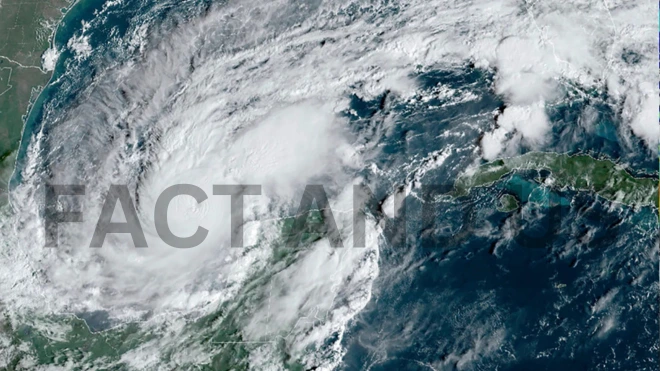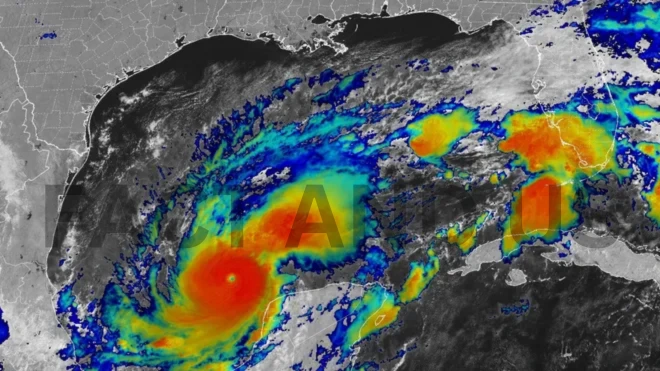US officials are warning about the potentially life-threating impacts of Hurricane Milton as it barrels towards the Florida coast. Milton is one of the most powerful storms to form in the North Atlantic in recent years. It comes just two weeks after Hurricane Helene caused substantial damage across the US.
The storm is expected to hit Wednesday.

Hurricane Milton is expected to make landfall on Florida’s west coast late Wednesday night or early Thursday morning. The National Hurricane Center predicts the storm will reach the Tampa Bay area around 2 am ET Thursday. It will bring dangerous conditions, including wind speeds exceeding 150 mph and storm surges as high as 10-15 feet in some areas. Impacts will be felt starting Wednesday afternoon, with conditions worsening into the night. The storm may weaken slightly before landfall but is still forecasted to be highly destructive Newsweek.
Contents
When will Hurricane Milton hit Florida?
The National Hurricane Center (NHC) expects Milton to make landfall as an “extremely dangerous hurricane” in the US state of Florida on Wednesday night, local time. It could strike near the city of Tampa, whose wider metropolitan area has a population of more than three million people.


Forecasters are warning of torrential rain, flash flooding, high winds and possible storm surges – which occur when water moves inland from the coast.They say Milton could be the worst storm to hit the area in about a century – with a surge of 10-15ft (3-4.5m) possible, and localised rainfall of up to 1.5ft.
Where is Hurricane Milton – and what is its path?
Milton became a category one hurricane on Sunday and has been steadily moving eastwards, through the Gulf of Mexico, after brushing past Mexico’s Yucatan peninsula. weather presenter Chris Fawkes said it had undergone explosive intensification in a 24-hour period, culminating in sustained wind gusts of 200mph (321km/h).
It was placed in the most powerful hurricane category – five – though it has fluctuated in strength.
While the hurricane dropped in intensity on Tuesday before returning to category five status, officials warned that it could double in size before striking Florida on Wednesday.
The core of the hurricane is expected to pass over west-central Florida, with a large storm surge expected along a swathe of the state’s coast ahead of landfall.
Where are the Hurricane Milton evacuation zones?

Floridians have been told to prepare for the state’s largest evacuation effort in years, with Governor Ron DeSantis warning that a “monster” is on the way.Most counties are in an official state of emergency, and evacuations have been ordered up and down Florida’s west coast.
Disaster management authorities have issued a list and map of the evacuation orders. Several large shelters have also been prepared as a last resort for those stranded.
Airports in Milton’s expected path have announced closures, and queues of traffic have been observed as people start to leave their homes.
Which were the worst US category fives?
A database from Noaa shows that at least 40 storms in the Atlantic have reached category five status since 1924, though only four have actually hit land at that strength. Here are some of the most damaging:
Hurricane Camille

Camille crashed into Mississippi in 1969, producing a peak storm surge of 24ft and destroying almost everything along the coast. It killed 259 people, most of them in Virginia, and caused about $1.4bn (£1.06bn) in damage.
Hurricane Andrew
Hurricane Andrew decimated southern Florida in 1992 with sustained wind speeds of up to 165mph and gusts as high as 174mph.It claimed 26 lives directly and was blamed for dozens of other deaths. After causing $30bn in damage, it was considered the costliest natural disaster in US history at the time.
Hurricane Michael
Hurricane Michael slammed into Florida in 2018 with 160mph wind speeds and was the strongest storm to make landfall in the Sunshine State.
At least 74 deaths were attributed to the storm – 59 in the US and 15 in Central America – and Michael caused an estimated $25.1bn in damage.
Lower-category storms
Milton comes less than two weeks after Hurricane Helene hit the US as a category four storm, killing more than 200 people and becoming the deadliest hurricane to strike the US mainland since Hurricane Katrina in 2005.
stay connected with fact and us for more such news.
